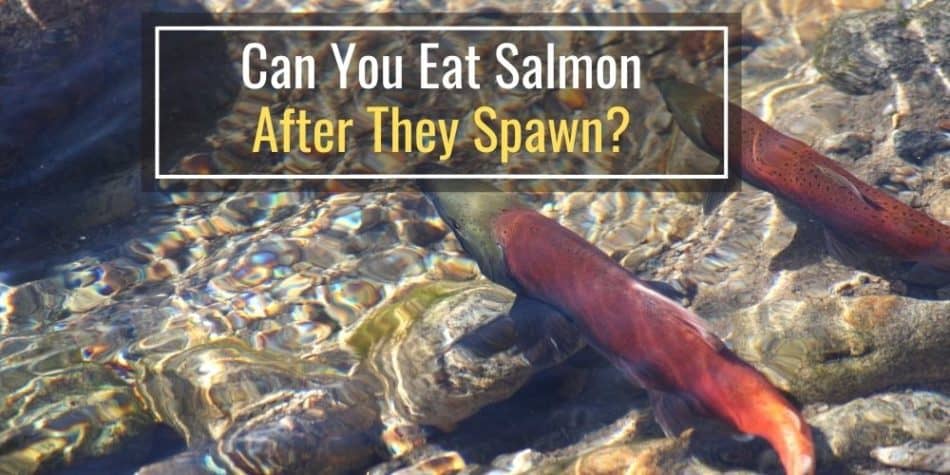Salmon change color to attract a spawning mate. Pacific salmon use all of their energy to get back to their home stream, lay eggs, and dig a nest. Once they get back to fresh water, most of them stop eating. They don’t have the energy to go back to the ocean after spawning. After they die, other animals eat them (but people dont) or they decompose, adding nutrients to the stream. Atlantic salmon don’t die after spawning like Pacific salmon do, so adults can do it again and again for many years.
No, salmon are not endangered worldwide. For example, most populations in Alaska are healthy. Some populations in the Pacific Northwest are much healthier than others. These populations are usually found in safe places, like the Hanford Reach on the Columbia River and streams in Olympic National Park. Learn more: Western Fisheries Research Center – Questions and Answers about Salmon.
Salmon are anadromous fish, meaning they hatch in freshwater migrate to the ocean to grow and mature, and return to freshwater to spawn and die. This incredible journey fascinates anglers and wildlife enthusiasts alike. But it also raises an important question – can you eat salmon after they spawn?
I did some research on this topic and here is what I found out
Why Salmon Deteriorate After Spawning
-
When salmon go into fresh water, they stop eating because they need all of their energy to spawn. This causes their body composition to change dramatically.
-
Their sleek silvery bodies transform into discolored humpbacked versions of themselves. Males in particular grow fanged jaws and hooked noses.
-
Pacific salmon species like sockeye and pink salmon deteriorate rapidly after spawning. Atlantic salmon can spawn repeatedly and are in better shape.
-
The loss of fat reserves during spawning means the meat loses its flavor and nutritional value. The texture also becomes poor.
-
As salmon near death after spawning, their immune systems shut down. Bacteria and fungi start decomposing the living fish from the inside out.
-
By the time salmon complete spawning and die, they are essentially rotten inside and not fit or safe for human consumption.
Tips for Eating Salmon Before They Spawn
-
Time your fishing trip to catch salmon when they are entering freshwater from the ocean. They will be at their peak quality and condition.
-
An experienced guide can tell a pre-spawn salmon by its color, body shape, and behavior. Target these fish for eating.
-
Use single barbless hooks if catching salmon that have already changed color or appearance. This allows easy release with minimal damage.
-
Keep the salmon alive on your line or in a live well until ready to process it. A freshly killed salmon has less time to deteriorate.
-
Have a cooler ready and process the fish within 1-2 hours maximum. Quickly clean, pack in ice, and refrigerate or freeze it.
-
Bleed out the salmon as soon as it is caught. Cut the gills and allow it to bleed into the water or on your boat. This flushes lactic acid from the flesh.
-
Cook the salmon well done. Higher temperatures will kill more parasites and bacteria that multiply as the fish declines. Undercooking is riskier with late-run salmon.
Safety Precautions With Post-Spawn Salmon
I do not recommend eating salmon after they have spawned or died, but here are some tips if you choose to do so:
-
Only keep salmon caught alive before it spawned. Do not eat fish found dead after spawning.
-
Cook the salmon immediately to 165°F minimum internal temperature. Discard any parts with strong odors or discoloration.
-
Freezing for 3-7 days at -4°F or below may kill parasites, but viruses and bacteria can survive freezing.
-
Canning and smoking apply high enough heat to kill pathogens in decomposing salmon. But the results may taste poor and have poor texture.
-
With any method, the breakdown of fats, proteins, and amino acids degrades the eating quality. The meat becomes dry and mushy.
-
Eating rotten salmon comes with risk of food poisoning. Symptoms like nausea, vomiting, diarrhea, and abdominal cramps can result.
The Verdict on Post-Spawn Salmon
While some folks may claim you can eat nasty-looking salmon after spawning with proper preparation, I don’t recommend it. The drastic decline in flesh quality and potential safety hazards make it not worth the risk in my opinion.
For the best flavor and texture, target bright, robust salmon entering freshwater to spawn. Employ quick bleeding, icing, and cooking to enjoy your catch at its prime. If you accidentally catch spawned-out salmon, consider releasing them to finish their life cycle.
The amazing salmon run provides ample opportunity to put tasty, sustainable fish on your dinner table. With care and proper handling, wild salmon can be an amazing culinary experience. Just be sure to catch them before they start deteriorating on their arduous final journey.

How Salmon Evolved to Die After Spawning
FAQ
Can you eat salmon after they spawn and die?
Does salmon taste good after spawning?
Are spawning pink salmon good to eat?
Can you eat fish after spawning?
